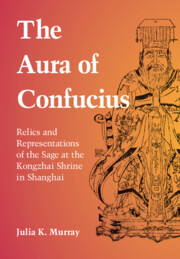We analyzed rare wooden Komainu found at Akagami Shrine in Akita prefecture, Japan. The formation of historical objects is often thoroughly recorded in documents, although the formation age of this particular Komainu sculpture is still unknown due to its antiquity. Thus, age determination exercises have been conducted using radiocarbon (14C)-wiggle-matching techniques. Although only a limited quantity was available for sampling, we have successfully measured 14C samples in the sculptures along with several sets of tree rings. We interpret the Komainu sculptures age considering the age of the trees and the result obtained from the wooden construction materials used for the Akagami shrine. The results obtained from Komainu show a range from 550 CE to 1020 CE, which is consistent with the dates of the shrine’s formation. Thus, the multiple 14C-wiggle-matching method can determine precise calendar ages of wood, as well as provide some supportive information for the periods when there are no reliable historical documents.
